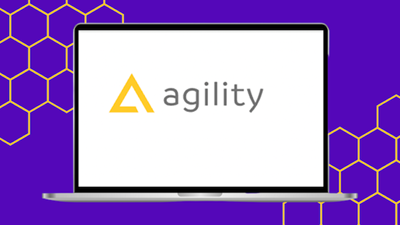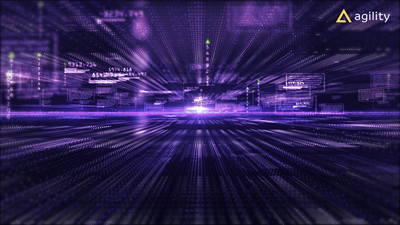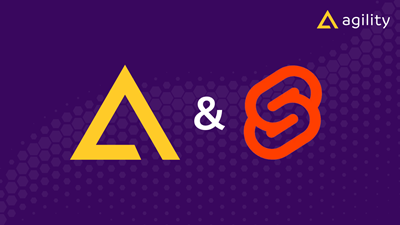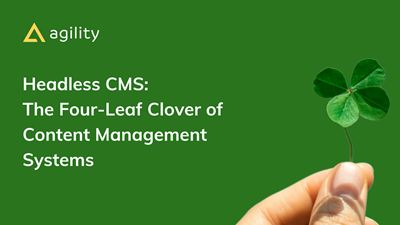Content Management: Why Your Business Needs an Enterprise Headless CMS

Content is king in the current business environment that we are in.
However, managing such material can be chaotic if not carefully handled across many platforms. Is version control becoming an issue? Are you also experiencing inconsistent brand messaging and inefficient workflows?
Do not worry. You are not alone, and we are here to help you.
This article will guide you through the turbulence of content management. We will look at the challenges you face, examine headless CMS systems, and give you the facts that will allow you to make a well-informed choice on this powerful content management solution.
From marketing materials and product descriptions to employee training manuals and customer support resources, businesses produce an ever-growing amount of information, including, but not limited to, engagement purposes and achieving their objectives.
The Challenges of Complexity in Content Management
While it is imperative to create content for your business for online and offline growth, it might be quite difficult for most to manage it effectively.
And though Traditional Content Management Systems (CMS) are useful tools, they may fail to address some complexities involved in large-scale content management. These deficiencies can take several forms like the following:
- Limitations on scalability: Traditional Content Management Systems (CMS) may not have the capability of handling the exponential increase in the volume of content with different types that include texts, images, or videos that businesses undergo with time.
- Security concerns: As the amount of data grows larger, the protection of sensitive business information becomes paramount for the success (or failure) of the business. The Traditional Content Management Systems (CMS) solutions might fail to provide adequate security measures which are very important in safeguarding sensitive data from being accessed by unauthorized persons within the organization or outside it as per industry regulations dictate.
- Customization limitations: The Traditional Content Management Systems (CMS) solutions employ a one-size-fits-all approach which does not cater to particular needs or flowcharts in complex organizations. Businesses often struggle when changing their distinct processes into company-specific systems since their procedures do not match those set out by this software model.
Enterprise Level CMS: The Whole Shebang for Businesses
Enterprise Level Content Management Systems have emerged as a solution to the challenges of managing content in complex landscapes.
These powerful and complete systems provide robust solutions for large organizations and businesses.
The following sections will dive deep into the challenges businesses face with content management and discuss how Enterprise Headless CMS empowers you to conquer this chaos.
We will also explore its key features, highlighting why it is such a robust system and equipping you to navigate these challenges efficiently, enabling you to achieve mastery in content management.
Understanding the Advantages of an Enterprise Level CMS
Traditional Content Management Systems (CMS), when compared to an Enterprise-Level CMS, have many disadvantages, especially for those whose content management requirements are complicated. A Headless CMS creates a bridge between traditional CMS solutions and Enterprise CMS.
So, what makes an Enterprise Headless CMS capable of transforming content management within your organization?
1. Scalability and Flexibility
Enterprise Headless CMS range is beyond compare in terms of scalability and flexibility.
On the other hand, traditional CMS can be cumbersome with the increasing number of content. In contrast, headless ones possess future-oriented frameworks that would help any business grow, even if changes are continuously happening around them.
Accommodating Growth
This means that Enterprise Headless CMS has websites that can handle voluminous data consisting of text files with different categories, such as articles, pictures, videos, and media files, among others. For large corporations, this scaling ensures continued pace with an increased rate of information availability.
Adapting to Change
It is possible for firms to change workflows, adapt user roles or allow some people within their system create new contents through special authorization. Therefore businesses might change their digital workforce while consumer demand for similar services remains stable, too.
2. Streamlined Workflows
Collaboration and Efficiency: An entire creation process is transformed from being chaotic to a well-orchestrated symphony with Enterprise Headless CMS. With proper user access levels, roles, automation, and so on, it eases the development, review, and publishing of materials within a single platform where users can effectively communicate with each other at every step in order to improve collaboration across the board.
Version Control and Consistency: Even a slight modification in the traditional CMS may lead to confusion – Questions like who has this document, etc, can be a problem. The mentioned problem is resolved by one of the key elements of Enterprise Headless CMS called version control.
It is said that version control is like a time machine for your content. It records each change made to a document, along with when and who did it.
This feature ensures version control on Enterprise Headless CMS, where one can see all versions made towards the document, if any. Consequently, it helps in maintaining uniformity across other documents, thereby reducing the chances of errors.
3. Consistent Brand Experience
Enterprise Headless CMS platforms have an architecture that allows businesses to create brand consistency with ease, unlike the traditional CMS, which can sometimes struggle with this over various channels. This experience comes as a result of its centralized content management system, which we shall discuss further in our next section.
Centralized Management:
Enterprise Headless CMS offers central content management as a single source of truth for your brand assets. This eliminates the fragmented chaos of traditional systems where content might reside on different platforms and become inconsistent.
Here, they have a built-in unified repository that houses all texts, images, videos, and, most importantly, your brand style guides. So everyone from editors to creators to approvers is working off the same recipe, thus minimizing mismatched information or off-brand messaging anywhere on your website, mobile app, social media, or any other channel you use.
Robust Security and Compliance
An Enterprise Headless CMS (ECMS) enhances sensitive data protection by offering a range of features such as:
- Access control: access to some sensitive data is limited according to the user’s roles and permissions.
- User authentication: ensuring only authorized persons enter the system.
- Encryption: use of strong encryption algorithms to protect data at rest and in transit.
- Compliance with Regulations: The role of Enterprise Headless CMS (ECMS) in assisting industries to comply with privacy laws applicable to data cannot be underestimated. In addition, their systems can be used by organisations as part of their compliance effort towards any legislations regarding privacy and security of individual’s data.
Integration and Future-proofing
Imagine a content management system that integrates seamlessly with the tools you are currently using…
This is particularly true for an Enterprise Headless CMS. It could easily connect with CRM software, marketing automation platforms, and e-commerce platforms, hence enabling you to streamline workflows, improve customer experience on a personal basis as well as enhance general sales and marketing efforts in total.
Also, data is no longer managed unsystematically across various business units but rather centrally within one platform, resulting in more streamlined workflows.
Additionally, scalability for growth means enterprise content management systems were built scalable as they grow together with the company’s needs. As companies increase content and number of users, it becomes easier to add these changes without necessarily altering any document details, thus making it viable. Enterprise Headless CMS: Assessing the Value Proposition
Enterprise Headless CMS: Assessing the Value Proposition
Before you introduce an Enterprise Headless CMS into your business, it is important to evaluate the environment of your current CMS and identify existing problems. Through this self-appraisal exercise, you can find out whether an Enterprise Headless CMS can solve some of your specific requirements and bring about its advantages.
Here are a few guiding questions:
- Content Amounts and Variety: Is there too much content handled by your present-day CMS? This can consist of different types of content such as text, images, video or multimedia files with different versions over time.
- Low Efficiency and Bottlenecks: Do you experience any kind of delays or impediments in approving materials? Ineffectual procedures can seriously affect productivity, which results in a delayed content release.
- Concerns for Security and Compliance Issues: Do you worry that your confidential information might be breached or that your company is not compliant with data protection regulations put in place by industry authorities? Conventional CMS solutions might not provide enough security measures needed by large organizations while having limited regulatory compliance capabilities.
- Problems of Brand Consistency: Are you finding it hard to maintain similar brand messaging as well as visual identity across different channels? Lack of consistent tonality may damage customer perception of brands, thereby eroding trust held by audiences.
If any of these queries were answered with a resounding YES on your end, then an Enterprise Headless CMS solution could be what you need. This system comes with all the features necessary to address the above issues, enabling efficient management within complex landscapes for businesses.
Enterprise Headless CMS: Return on Investment (ROI) Review
The following sectors below are expected to witness a positive return on investment if they adopt an enterprise headless CMS:
- Time Savings and productivity improvement, and also automation facilities like centralized management, which enable managers and creators to save lots of time.
- Cost Reduction, which may result in lessening costs significantly through the removal of multiple Content Management Systems or increased staff numbers required to manage complex content.
- Enhanced brand consistency and visibility— When all channels have centralized management and brand control features, there are fewer mistakes and consistent brand messaging. This may eventually result in greater brand recognition as well as enhanced customer satisfaction.
- Adequate security and compliance — In this regard, strong security features help you avoid data breaches as per the regulatory requirements in the industry. Thus, there will be no penalties, safer information security, and a possibility of greater trust by customers in how secure your firm system is.
Implementation and Support: Making a Smooth Transition
The main points to consider include:
1. Implementation Process: Understand the timing for implementation, resource implications of the implementation process, and potential disruptions that might be caused by such changes. Therefore, it helps in planning effectively, hence minimizing any hiccups to normal operations.
2. Ongoing Support: Supplier must offer continuous support including but not limited to;
Training resources: Does your team require thorough training on this new stage so that they can make the most of it without facing challenges related to adoption?
Technical assistance: If you experience technical problems along the way, you will need vendor availability and time assistance to address any arising issues or concerns.
System Refreshes: For any modernized software to be safe, it should be updated to accommodate changing technology and serve future needs, if any.
3. Scalability and Future Needs: Find solutions that can grow with your content management requirements. Make sure that you choose a platform that is feature-rich and enables one to add more content as the volume or complexity increases in the future.
Final Thoughts: A Modern Business Landscape’s Content Management System
Think of the modern business landscape as an immense ocean, a surging behemoth of opportunities and rivalries. Businesses need an efficient tool for surviving and prospering within this tough environment – a content management system (CMS).
Just as a leviathan would have different adaptations to navigate through the depths of the sea, businesses need to take a strategic approach to content management. Content management systems must solve this problem of managing increasing numbers and complexities.
The dynamic nature of content poses a significant challenge for traditional data management technologies, especially in large-scale organizations.
And this is where Enterprise Headless CMS comes into play as a superhero solution.
The functions that Enterprise Headless CMS performs are quite varied, from dealing with massive amounts of diverse types of content to streamlining processes and maintaining brand consistency. It has the following:
- Uninterrupted scalability as well as versatility: Control huge amounts in addition to various types of data
- Smart automation tools improve productivity throughout from creation up to approval, thus increasing efficiency.
- Consistency across all channels with respect to brand voice.
- Adhere to industry regulations when it comes to safeguarding sensitive information.
- Lastly, linking data between already existing enterprise systems isn’t hard at all.
In other words, it must evolve with your organization’s content management needs; otherwise, it should grow simultaneously with them.
If you think that your present CMS is no longer capable of fulfilling your requirements or has become too complex, then perhaps it is time you should consider Enterprise Headless CMS. It makes a whole lot of difference and we promise you that it is indeed worth your while.



